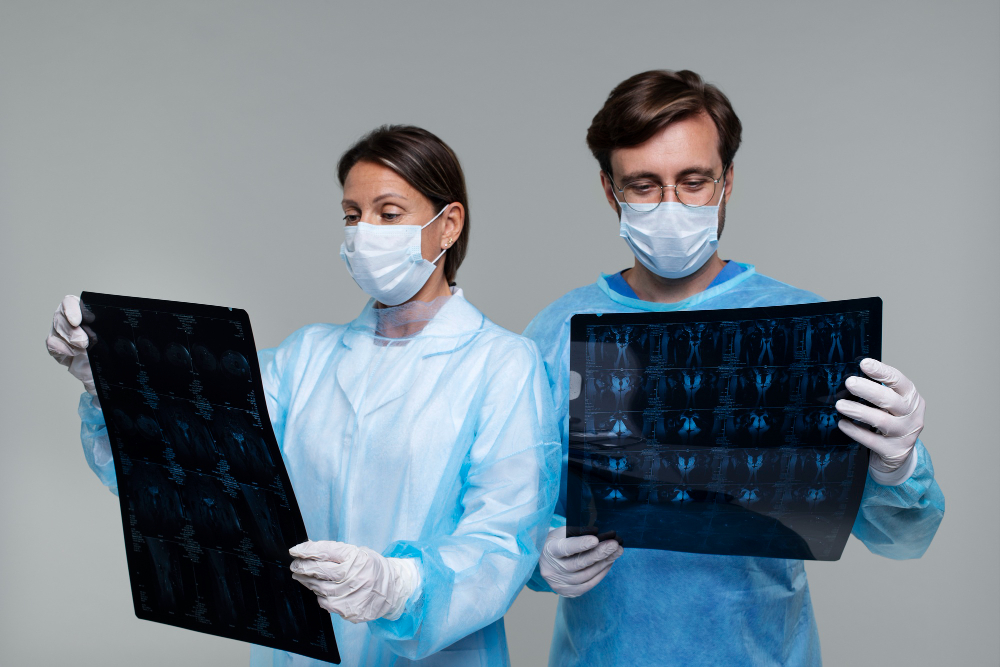What Role Do Radiologic Technologists Play in the Healthcare System?

Introduction
Radiologic technologists, often referred to as radiographers or x-ray technicians, play a crucial role in the healthcare system by performing diagnostic imaging examinations. From x-rays to MRIs, CT scans to mammograms, these skilled professionals operate advanced medical equipment to capture images of the internal structures of the body, contributing to Radiology Center Dubai. Let's delve into the significant contributions of radiologic technologists to the healthcare industry.
Understanding the Responsibilities of Radiologic Technologists
Radiologic technologists are trained professionals responsible for operating medical imaging equipment such as X-ray machines, CT scanners, MRI machines, and ultrasound devices. They perform diagnostic imaging procedures to produce high-quality images of the internal structures of the human body, contributing significantly to the Advanced Radiology Centre. These images help physicians assess and diagnose medical conditions ranging from broken bones to cancerous tumours.
Essential Duties and Responsibilities
Radiologic technologists are responsible for a wide range of duties related to diagnostic imaging. These include:
Patient Preparation
Before conducting any imaging procedure, radiologic technologists ensure that patients are adequately prepared. This may involve explaining the procedure, positioning patients correctly, and addressing any concerns or questions they may have.
Operating Imaging Equipment
Radiologic technologists are trained to operate various types of imaging equipment, including x-ray machines, CT scanners, MRI machines, ultrasound devices, and fluoroscopy equipment. They must ensure that the equipment is calibrated correctly and that images are captured accurately.
Image Quality Control
Ensuring the quality of diagnostic images is paramount in radiology. Radiologic technologists are responsible for positioning patients correctly, adjusting equipment settings, and selecting the appropriate imaging techniques to obtain clear and accurate images. Their meticulous attention to detail and expertise contribute to the diagnostic accuracy required by radiologists in Dubai for effective patient care.
Patient Safety
Radiologic technologists prioritize patient safety throughout the imaging process. This involves following strict safety protocols, such as shielding patients from unnecessary radiation exposure, using protective equipment, and adhering to radiation safety guidelines.
Specialized Areas of Practice
Radiologic technologists may specialize in various areas of diagnostic imaging, including:
Radiography
Radiographers specialize in producing X-ray images of the body to diagnose injuries, diseases, and conditions such as fractures, pneumonia, and lung cancer.
Computed Tomography (CT)
CT technologists perform CT scans, which provide detailed cross-sectional images of the body's internal structures. These scans are used to diagnose conditions such as tumours, blood clots, and internal injuries. Their expertise in operating CT equipment ensures the accuracy and clarity of these images, which are crucial for diagnosis and treatment planning at a radiology centre near me.
Magnetic Resonance Imaging (MRI)
MRI technologists operate MRI scanners, which use magnetic fields and radio waves to generate detailed images of the body's organs and tissues. MRI scans are valuable for diagnosing conditions such as brain tumours, spinal cord injuries, and joint disorders.
Ultrasound
Ultrasound technologists perform ultrasound examinations, which use sound waves to create real-time images of internal organs, blood flow, and fetal development. Ultrasound is frequently used for checking on babies before they're born, examining the heart, and looking inside the belly.
Advanced Imaging Techniques
Radiologic technologists are trained to perform a variety of imaging procedures using state-of-the-art technology. These techniques include:
Interventional Radiography
Interventional radiography involves the use of imaging techniques, such as fluoroscopy or CT scans, to guide minimally invasive procedures, such as angioplasty, stent placement, and tumour ablation. Radiologic technologists assist physicians during these procedures by operating imaging equipment and ensuring the accuracy of image guidance in interventional radiology settings.
Fluoroscopy
Fluoroscopy is a real-time imaging technique that allows radiologic technologists to visualize moving internal structures, such as the digestive system or blood vessels, in real time. It is commonly used during procedures such as barium enemas, gastrointestinal studies, and cardiac catheterizations.
Mammography
Mammography is a specialized imaging technique used to detect and diagnose breast cancer. Radiologic technologists operating mammography equipment must have specific training and certification to ensure accurate and high-quality imaging.
Nuclear Medicine
Nuclear medicine involves the use of radioactive materials, known as radiopharmaceuticals, to diagnose and treat various medical conditions. Radiologic technologists administer radiopharmaceuticals to patients and then use specialized cameras to capture images of the body's internal organs and tissues.
Collaboration with Healthcare Professionals
Radiologic technologists work closely with radiologists, physicians, and other healthcare professionals to interpret diagnostic images and formulate treatment plans. They collaborate with multidisciplinary teams to ensure that patients receive timely and accurate diagnoses, enabling healthcare providers to deliver optimal care.
Patient Care and Communication
In addition to their technical skills, radiologic technologists are also responsible for providing compassionate care to patients undergoing imaging procedures. They must communicate effectively with patients, explaining the purpose of the procedure, addressing any concerns or anxieties, and ensuring patient comfort and safety throughout the process.
Quality Assurance and Radiation Safety
Radiologic technologists play a crucial role in maintaining quality assurance and radiation safety standards in diagnostic imaging. They must adhere to strict protocols and guidelines to minimize radiation exposure to patients, staff, and themselves. This includes using proper shielding techniques, optimizing imaging parameters, and monitoring radiation dose levels.
Continuous Education and Training
To stay abreast of advancements in imaging technology and techniques, radiologic technologists engage in ongoing education and training. They participate in continuing education programs, attend conferences, and pursue advanced certifications to enhance their skills and knowledge in the field of diagnostic imaging.
Conclusion
In summary, radiologic technologists play an indispensable role in the healthcare system by performing diagnostic imaging examinations that aid in the diagnosis and treatment of various medical conditions. Their expertise, attention to detail, and commitment to patient care contribute significantly to the delivery of high-quality healthcare services. As technology continues to advance, the role of radiologic technologists will remain vital in shaping the future of medicine.